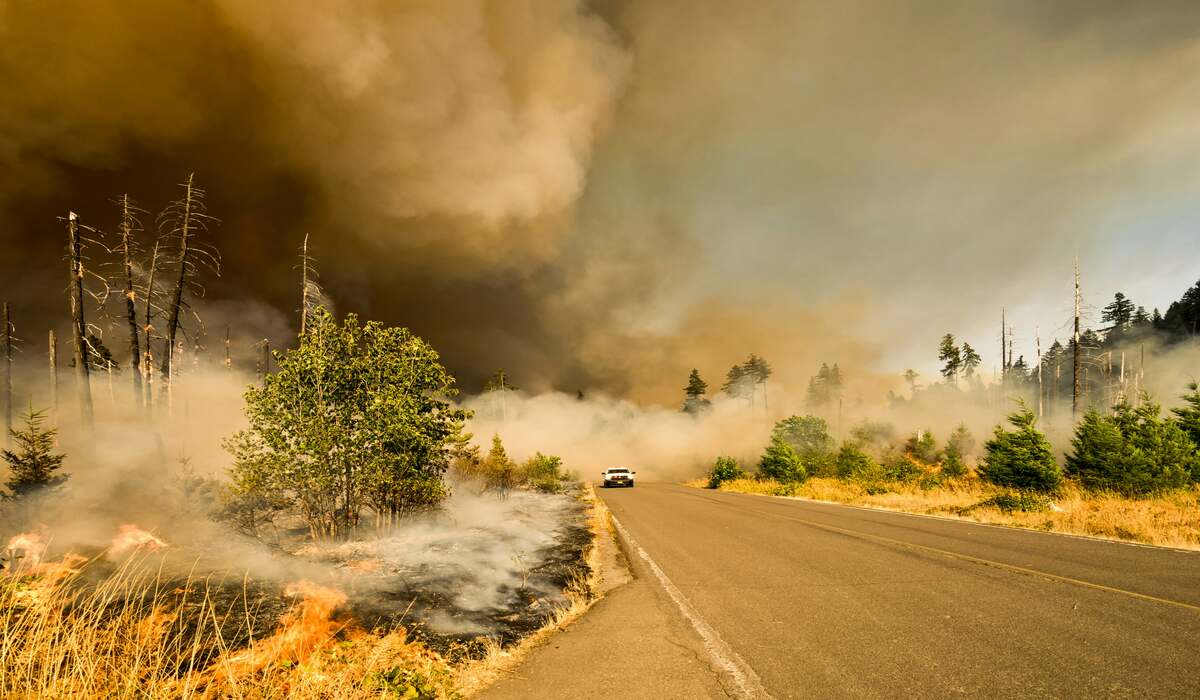Table of Contents
Wildfires are a recurring natural phenomenon, but certain blazes throughout history have left an indelible mark on the landscape and psyche of the United States. With the most recent being the Texas panhandle wildfires, these infernos have ravaged vast swathes of land, destroyed homes, and claimed lives. In this article, we dive into some of the most significant wildfires in U.S. history, exploring their causes, impacts, and the lessons learned from these catastrophic events.
The Great Fire of 1910 (The Big Burn)
- Occurring in the Northern Rockies of Idaho and Montana, the Great Fire of 1910 remains one of the most devastating wildfires in U.S. history.
- Fueled by dry weather and strong winds, the fire consumed approximately three million acres of land and destroyed several towns.
- The blaze claimed the lives of at least 87 people, including firefighters and civilians, and led to significant changes in wildfire management policies and practices.
The Peshtigo Fire (1871)
- Often overshadowed by the Great Chicago Fire, the Peshtigo Fire is one of the deadliest wildfires in recorded history.
- Sweeping through northeastern Wisconsin and parts of Upper Michigan, the fire ignited on October 8, 1871, burning approximately 1.2 million acres of land.
- The exact death toll remains uncertain, but estimates suggest that between 1,200 to 2,500 people perished in the inferno, making it the deadliest wildfire in U.S. history.
The 2018 California Wildfires
- In 2018, California experienced one of its most devastating wildfire seasons on record, with multiple large fires burning across the state.
- The Camp Fire, the deadliest and most destructive of the season, decimated the town of Paradise, claiming 85 lives and destroying over 18,000 structures.
- Other notable fires during the 2018 season include the Woolsey Fire and the Carr Fire, which collectively scorched hundreds of thousands of acres and forced thousands of residents to evacuate.
The Great Fire of 1919 (The Cloquet Fire)
- Occurring in northeastern Minnesota, the Great Fire of 1919, also known as the Cloquet Fire, ranks among the deadliest wildfires in U.S. history.
- Sparked on October 12, 1918, the fire consumed approximately 250,000 acres of land and destroyed numerous communities, including the city of Cloquet.
- The blaze claimed the lives of at least 453 people, making it the deadliest wildfire in Minnesota’s history.
The 2020 West Coast Wildfires
- In September 2020, a series of wildfires erupted along the West Coast of the United States, exacerbated by extreme heat, dry conditions, and high winds.
- The wildfires burned millions of acres across California, Oregon, and Washington, leading to widespread evacuations and air quality concerns.
- The complex of fires, including the August Complex Fire in California and the Beachie Creek Fire in Oregon, resulted in numerous fatalities and billions of dollars in property damage.
What to Do in Case of a Wildfire
Wildfires can spread rapidly and pose significant threats to lives, property, and the environment. Being prepared and knowing what to do in case of a wildfire can help you stay safe and protect yourself and your loved ones. Here are some essential steps to take if you find yourself in the path of a wildfire:
- Stay Informed: Pay attention to local news, weather forecasts, and official alerts from emergency management agencies. Stay informed about wildfire activity in your area and any evacuation orders or alerts issued by authorities.
- Have an Evacuation Plan: Develop a comprehensive evacuation plan for your family and pets. Identify multiple evacuation routes from your home and establish meeting points in case you become separated. Practice your evacuation plan regularly to ensure everyone knows what to do.
- Prepare an Emergency Kit: Assemble an emergency kit containing essential supplies such as water, non-perishable food, clothing, medications, flashlight, batteries, first aid supplies, important documents, and cash. Keep your emergency kit in a readily accessible location.
- Create a Defensible Space: Maintain a defensible space around your home by clearing brush, debris, and flammable materials from your property. Trim trees and shrubs to create a buffer zone that helps prevent wildfires from spreading to your home.
- Protect Your Home: Take proactive measures to safeguard your home against wildfire threats. Install fire-resistant roofing materials, ember-resistant vents, and screens on windows and doors. Keep gutters clean and clear of debris. Store flammable materials such as firewood and propane tanks away from your home.
- Stay Calm and Act Quickly: If you receive an evacuation order, remain calm and act quickly. Gather your family members, pets, and emergency supplies, and evacuate the area immediately. Follow designated evacuation routes and obey instructions from emergency responders.
- Communicate with Others: Keep in touch with family members, neighbors, and friends to ensure everyone is aware of the wildfire situation and evacuation orders. Share information about your whereabouts and safety status to alleviate concerns.
- Follow Health Guidelines: Wildfires can produce hazardous smoke and air quality conditions. If you remain in an area affected by wildfire smoke, stay indoors, keep windows and doors closed, and use air purifiers or filtration systems if available. Limit outdoor activities, especially for vulnerable individuals such as children, the elderly, and those with respiratory conditions.
- Stay Away from the Fire: Avoid approaching or attempting to fight wildfires on your own. Leave firefighting efforts to trained professionals and emergency responders. Your safety is paramount.
- Stay Vigilant After the Fire: Even after a wildfire has been contained, remain vigilant for potential flare-ups and secondary hazards such as unstable terrain, falling trees, and debris flows. Follow instructions from authorities regarding re-entry and recovery efforts.
The history of wildfires in the United States is fraught with tales of devastation, loss, and resilience. From the Great Fire of 1910 to the recent infernos that ravaged the West Coast, these events serve as stark reminders of nature’s power and the importance of preparedness, mitigation, and community resilience in the face of such disasters


